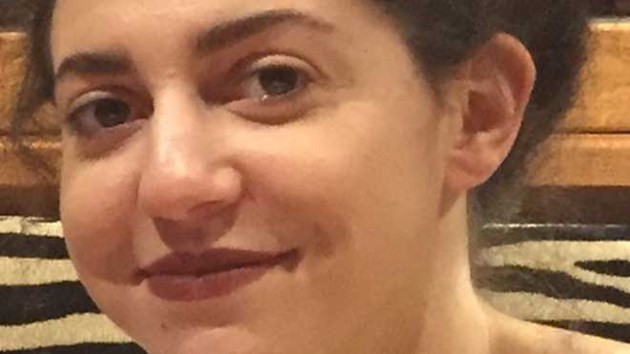Toronto police say they're reviewing the conduct of officers who investigated the disappearance of a young woman later found dead in a busy downtown neighbourhood.
Tess Richey, 22, was reported missing on Nov. 25. Her body was found four days later in an alleyway near the Church Street and Wellesley Street East — the bustling area at the heart of Toronto's gay village where Richey was last seen.
Police are treating her death as a homicide.
Richey is originally from North Bay.
Toronto police spokesman Mark Pugash said the Professional Standards Unit — which responds to allegations of officer misconduct — was acting on police concerns about the way the investigation was handled before Richey was found dead. Pugash did not say specifically what those concerns were.
Richey's body was found on a set of stairs at the back of an alley, next to an empty building undergoing renovations, said William Ayers, owner of a dog training and boarding business on the other side of the alley.
"It was pretty hectic, people outside on the street were screaming, saying, 'Call the police there's a body there,'" Ayers said, recalling the afternoon that Richey's body was discovered.
By Monday, a collection of flowers, cards, and mementos had been left as a memorial on the gravel-lined alleyway. A single rose and lines of candles sat at the bottom of the steps where her body was found.
"Definitely people are talking about being scared now," said Ayers. "It's pretty freaky."
Richey's death comes after a tense year for the Church and Wellesley community, during which two men vanished from the area.
Selim Esen, 44, was last seen in April, while Andrew Kinsman, 49, disappeared in late June.
Both men had links to Toronto's LGBTQ community and were familiar with the Church and Wellesley neighbourhood.
Three men, between the ages of 40 and 58 went missing from the area between 2010 and 2012.
Toronto police established a task force this year to investigate the disappearances, but Pugash said they had yet to establish a connection between any of the men's disappearances, or between their cases and Richey's death.
Locals said the string of disturbing events has taken its toll on the neighbourhood, which is lined with bars, restaurants, and boutiques.
Vincent Wolfe, who lives just around the corner from where Richey's body was found, said the area seems less safe than it used to.
"I've been around for 20 years and it's certainly changed, not for the better," Wolfe said. "I've seen all kinds of things going on. It makes me nervous."
There is a high volume of drug use in the area, Wolfe said. Local businesses have had their windows broken, while shopkeepers are sometimes harassed or threatened.
"I've heard homophobic slurs and things when these people are drugged out or you don't give them money," Wolfe said. "I think (homophobia) is bubbling in the background but I don't think that's the only problem."
Wolfe and Ayers have noticed a handful of police officers patrolling the area lately, which they say brings a greater sense of security.
Officers at the local police Division 51 "are attentive to the demands of (the area)," Pugahs said, in reference to the complaints of drug use and vandalism in the area. "They are very good at forming relationships with the community. But there is no doubt that 51 Division has its challenges."
Toronto homicide detectives spent Monday canvassing the area around where Richey's body was found, looking for security camera footage that might help the investigation, Pugash said.
Police say they believe Richey was with a female friend and an "unknown male" on the night she went missing. Her friend left Richey and the male alone that night, police say.
The male, who police are looking to identify, is described as white, approximately 5-7 to 6 feet tall with a slim build and short, light coloured hair.
Peter Goffin, The Canadian Press
